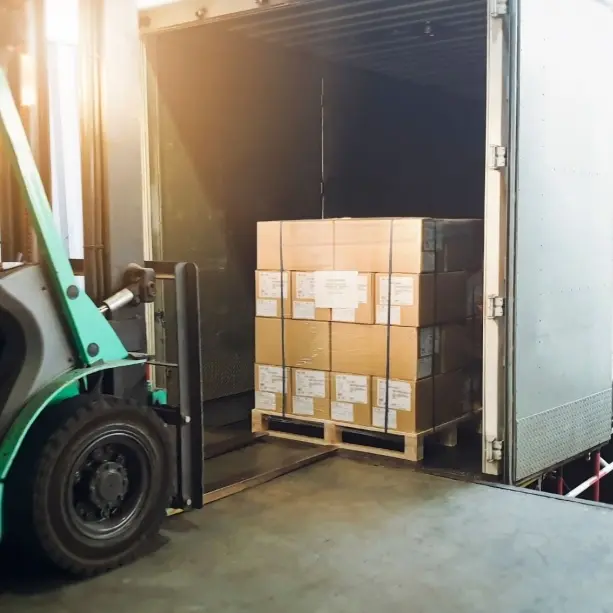Optimizing workflows is essential for maintaining efficiency, reducing costs, and staying ahead of the competition. One powerful tool that fleet managers can leverage to achieve these goals is asset tracking. By effectively tracking your valuable assets, companies can streamline their operations, improve productivity, and make informed decisions. This blog explores how asset tracking can optimize various aspects of workflow, including inventory management, maintenance and repairs, logistics and supply chain, resource allocation, asset utilization, compliance and security, customer service, and data-driven decision-making.
Increase Your ROI by Investing in AirFinder Everywhere
- Loss Prevention. Reduce the amount of loss that occurs during the supply chain process
- Location Coverage. AirFinder Everywhere uses a combination of GPS, Cellular, and WiFi to determine location everywhere
- Security Alerts. Know when a delay in shipment has occurred so the problem
can be addressed immediately.
Understanding Asset Tracking
An asset tracking system involves the use of technology to monitor the location, status, and usage of assets including trailers, equipment, and cargo. Gaining visibility of these valuable assets helps fleet managers optimize their logistics operations. The primary technologies used in asset tracking include:
- Barcode Scanning: Barcode scanning involves using barcode labels and scanners to identify and monitor assets. This method offers a cost-effective, efficient solution for tracking inventory, managing assets, and ensuring accuracy in data collection. The drawback to this solution is how manual it is. This manual option does not provide real-time location information and runs the risk of human error.
- RFID (Radio Frequency Identification): Passive RFID technology for asset tracking uses tags without batteries that are activated by a reader’s electromagnetic signal. These tags provide cost-effective tracking of assets, but cannot provide visibility in real time. An example of how this technology works is when it's used for checkpoints along a route. If a trailer never reaches a checkpoint, there’s no way to know where it ended up.
- GPS (Global Positioning System): GPS technology for asset tracking provides real-time location data, enabling businesses to monitor and manage their assets efficiently. By using satellites, GPS systems accurately track the movement and status of vehicles, equipment, and shipments, enhancing operational visibility, optimizing routes, and preventing theft or loss of valuable assets. This technology provides highly accurate location information, but drains the tag battery quickly.
- Cellular: Cellular technology for asset tracking leverages mobile networks to transmit real-time data about asset location and status. This method is highly effective in areas with good cellular coverage, enabling businesses to continuously monitor their assets, optimize logistics, improve resource allocation, and enhance security by quickly detecting and addressing unauthorized movements.
- WiFi Sniffing: WiFi sniffing for asset tracking involves detecting and locating assets using nearby WiFi signals. This solution doesn’t connect to any WiFi networks, only senses them, so your assets remain secure. The tags will detect nearby WiFi networks and determine its location based on how close it is to the WiFi network.
By leveraging an asset tracking solution that combines GPS, cellular, and WiFi sniffing, you can obtain high location accuracy while extending your battery life.
Benefits of Asset Tracking
Improved Efficiency
Asset tracking significantly enhances efficiency in logistics operations by providing real-time visibility and control over assets and shipments. Asset tracking technology enables continuous monitoring of the location and status of trailers, equipment, and goods. This real-time data allows for optimized route planning, reducing travel time and fuel consumption. Automated alerts for delays or deviations ensure swift responses to issues, minimizing disruptions. Asset tracking also aids in reducing downtime and operational costs. This is because you can see the usage levels of trailers and equipment and make changes to optimize uptime. By streamlining these processes, asset tracking software improves resource utilization, enhances reliability, and boosts overall operational efficiency. This results in faster, more accurate deliveries, increased customer satisfaction, and a more competitive edge in the logistics industry.
Cost Savings
Asset tracking can also lead to significant cost savings by preventing theft and loss by providing accurate location data and alerts for unauthorized movements, safeguarding valuable assets. Automated inventory management reduces the need for excess stock, freeing up capital and storage space. Predictive maintenance scheduling, based on real-time data, prevents costly breakdowns and extends the lifespan of equipment. Additionally, efficient asset utilization ensures that resources are allocated where they are most needed, avoiding underutilization and redundancy. Overall, asset tracking delivers substantial cost savings by improving efficiency, reducing waste, and enhancing the security of logistics operations.
Enhanced Decision Making
With real-time data and analytics, asset tracking provides businesses with valuable insights that can inform decision-making. By having accurate information on asset location, status, and usage, businesses can make more informed decisions about asset management, resource allocation, and operational strategies. Historical data analysis helps identify trends, inefficiencies, and areas for improvement, guiding strategic planning and resource allocation. Additionally, data-driven insights support risk management by identifying potential issues before they escalate. Overall, asset tracking empowers logistics managers with the information needed to make proactive, informed decisions, ultimately improving efficiency, reducing costs, and enhancing customer satisfaction.
Real-Time Shipment Tracking
Real-time visibility is essential for ensuring the smooth movement of goods from suppliers to customers. IT asset tracking software enables real-time shipment tracking, providing companies with up-to-date information on the location and status of their shipments. With an asset tracker, companies can monitor the progress of their shipments at every stage of the supply chain. This visibility allows for better coordination and planning, ensuring that shipments arrive on time and in good condition. It also enables fleet managers to respond quickly to any issues that may arise, such as delays or deviations from the planned route. If a truck encounters a delay due to traffic or weather conditions, the company can quickly reroute other trucks or notify customers of the delay. This level of visibility and responsiveness helps in maintaining customer satisfaction and optimizing the supply chain. In addition to real-time tracking, asset tracking systems provide end-to-end visibility of the supply chain. This visibility allows fleet managers to identify bottlenecks and inefficiencies, optimize the flow of goods, and improve overall supply chain performance. This helps in reducing lead times, minimizing inventory holding costs, and improving production efficiency.
Resource Allocation
Effective resource allocation is crucial for maximizing efficiency and productivity. Asset tracking systems provide valuable data on the utilization of assets, allowing companies to allocate resources where they are needed the most. By analyzing asset utilization data, companies can identify patterns and trends in demand and allocate assets accordingly. Underutilized assets can be a significant drain on resources. Asset tracking IoT solutions help companies identify underutilized or idle assets and strategically reallocate them to improve overall efficiency. If certain vehicles are consistently underutilized, the company can reallocate them to areas where they are needed more or consider selling or leasing them to reduce costs. This not only improves asset utilization but also frees up resources that can be invested in other areas of the business.
The Role of AI
Asset tracking data is the cornerstone of AI-driven transformations in logistics operations, providing a foundation for further enhancements of efficiency, accuracy, and decision-making. The real-time data collected from the asset tracking system serves as a rich, dynamic dataset for AI algorithms to analyze, enabling a multitude of optimizations and predictive insights. AI leverages historical and real-time data on traffic patterns and delivery times to dynamically adjust routes, significantly reducing fuel consumption, delivery times, and operational costs. This ensures that fleet managers can meet tight schedules and reduce their environmental footprint. AI utilizes asset tracking data to forecast demand accurately. This results in improved inventory turnover, reduced holding costs, and minimized instances of overstocking or stockouts. Automated reordering processes ensure that inventory is replenished just in time, enhancing overall supply chain efficiency. Security is greatly enhanced through AI-powered analysis of asset tracking data. AI can detect anomalies and unauthorized movements, triggering alerts to prevent theft and unauthorized access to valuable assets. This level of security is crucial for protecting high-value shipments and sensitive goods. AI-driven analytics provide fleet managers with actionable insights derived from asset tracking data, facilitating better strategic planning and resource allocation. This data-driven approach enables quick and informed decision-making, helping companies to adapt swiftly to changing conditions and demands. Furthermore, AI can identify inefficiencies and bottlenecks in logistics workflows, enabling continuous improvement in processes and productivity. Automated systems powered by AI handle repetitive tasks and optimize operations, freeing up human resources for more complex and value-added activities. Customer satisfaction also benefits from AI-powered asset tracking. Accurate delivery estimates and real-time updates improve service reliability and transparency, fostering trust and satisfaction among customers. Overall, the integration of AI with asset tracking data revolutionizes logistics operations, driving efficiency, reducing costs, enhancing security, and elevating customer service. This synergy between AI and asset tracking paves the way for a smarter, more responsive, and competitive logistics industry.
Conclusion
AirFinder Everywhere is a comprehensive commercial asset tracking solution designed for logistics operations, providing real-time visibility and control over assets globally. Utilizing a combination of GPS, cellular, and WiFi sniffing, AirFinder Everywhere ensures accurate location data, enabling efficient route planning and reducing operational costs.
Effective asset tracking leads to significant workflow optimization across various aspects of logistics operations. By accurately monitoring shipments and optimizing resource allocation, companies can enhance efficiency, reduce costs, and improve productivity. Additionally, asset tracking systems enable data-driven decision-making, improving service delivery and customer satisfaction. As companies continue to evolve and face new challenges, the importance of asset tracking will only grow. By implementing effective asset tracking solutions, companies can stay ahead of the competition and achieve long-term success. Incorporating asset tracking into your business strategy is not just a smart move but a necessary one to ensure that you can keep up with the demands of modern business environments. Book a demo with our team of experts to learn how our solution can help you optimize your workflows.





